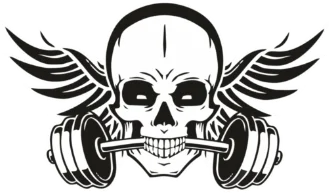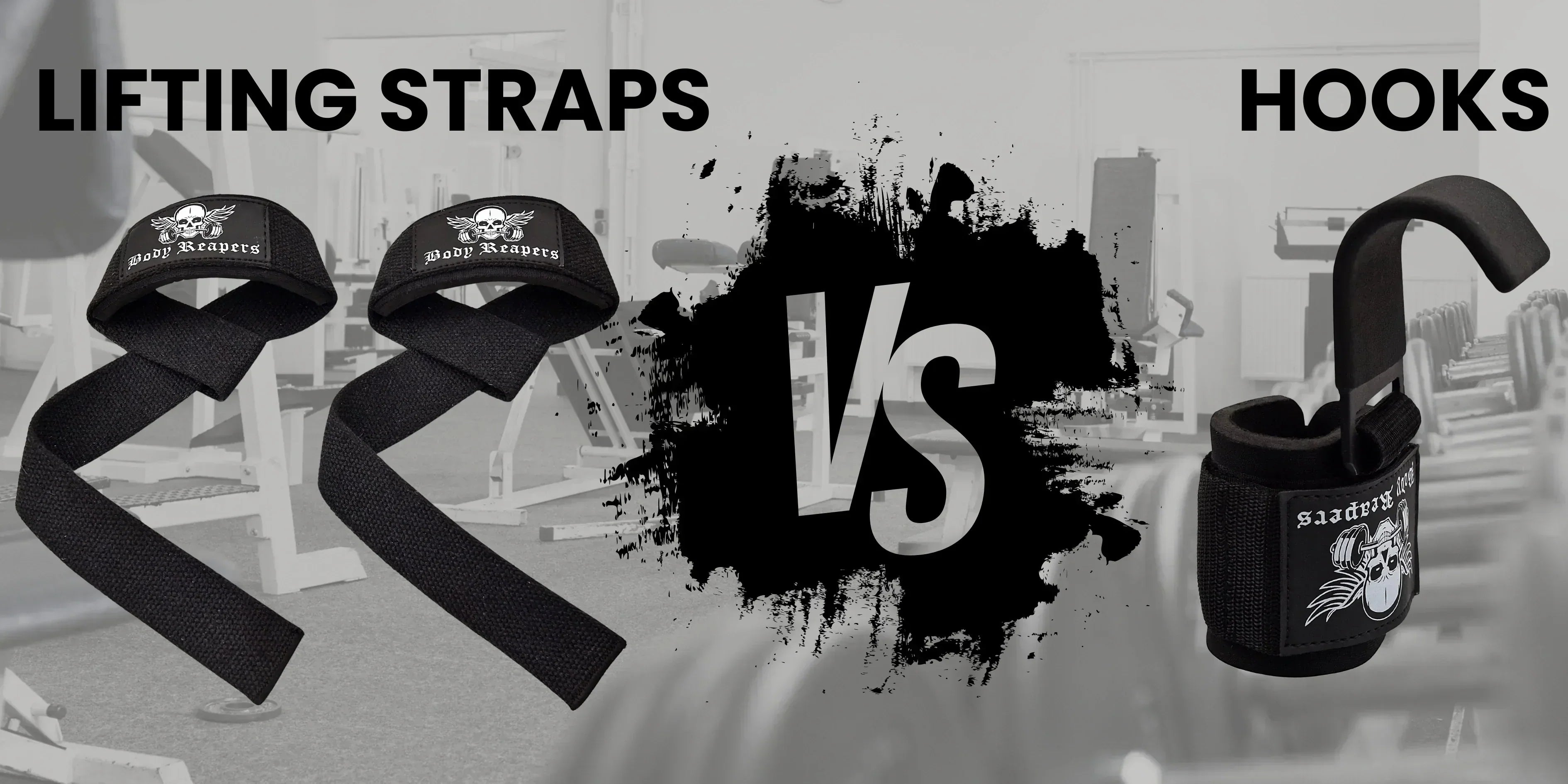The Gym Warrior's Path to Unstoppable Growth: Have the Courage to Fail
The Brutal Truth: You Can't Avoid Failure It's Necessary
The iron is always right. The barbell informs you just how strong you are when you walk into the gym. That heavy weight that kept you down on the bench last week? The company plan that didn't work out at all? The relationship that went up in flames? These aren't reasons to back down. These are the most important training sessions for you.
People spend most of their lives running away from failure like it's a predator. But what if failure is your best friend? Every time you fail, you're gathering information that will eventually lead to a breakthrough.
The body only grows when it is pushed to its limits. Muscles break down before they get stronger. You can only build neural circuits by trying again and again. This isn't just science at the gym. It's the most basic rule for making real progress.
The champions you look up to, whether they are in the weight room, the boardroom, or on the battlefield, all have one dirty little secret: their highlight reels are made up of a lot of failures that you don't see. They didn't fail less; they failed smarter, learnt faster, and kept going when others gave up.
How Failing Makes Your Body Grow

1. The "All-or-Nothing" Law for Muscle Fiber Recruitment
When you push a set to failure, your body uses all of its muscle fibers to finish the exercise. This starts:
- More muscle fibers functioning (more motor units activated)
- Metabolic stress, which is the burn that tells the body to grow
-
Hormonal spikes (testosterone and growth hormone levels rise)
A study in the Journal of Strength and Conditioning found that weightlifters who trained to failure gained twice as much muscle mass as those who stopped short.
2. The Mind-Muscle Connection: How Well Your Brain Works
Failure isn't only about your muscles. It's about changing the connections in your brain. Your nervous system learns when you fail:
- How to fire more effectively (better coordination)
- When to push through boundaries (mental toughness)
- How to get better at recovering (adaptation)
Pro Tip: The more you fail safely, the better your body learns to bounce back.
Why Failure Is Necessary for Growth
1. Failure is proof You're in the Arena
To prevent failure, most people stay away from chances, but comfort is the actual adversary. You're not living up to your full potential if you never fail.
"You miss every shot you don't take."
The Science Behind It: Research from Stanford University reveals that accepting failure makes the brain more flexible. When you fail, your brain releases dopamine and noradrenaline, which make you more focused and speed up your learning.
Action Steps:
- Keep track of your failures like you do your PRs.
- Don't simply celebrate achievements; celebrate tries.
2. The best teacher is failure.
A missed PR shows that your skill, attitude, or preparation isn't good enough. Plateaus aren't things that stop you; they're feedback.
Eddie Hall's 1,000 Failed Deadlifts
Hall failed more than 1,000 times before he broke the record for the deadlift of 500 kg. He learned how to improve his grip, brace, and pacing with each miss. Every failure was a chance to learn.
Steps to Take:
- Write down three specific things you need to fix after a lift that didn't work.
- Make changes in your next session.
3. Failure makes you stronger than ever
You have to work for mental toughness. Failure makes you change. You get stronger, or "grit," the more you fail.
Winning doesn't make you stronger. It arises from having a hard time. Arnold Schwarzenegger
The Navy SEALs' 40% Rule says that when you think you're done, you're only 40% done. You can get to the other 60% via training through failure.
Things to Do:
- Once a week, train for prior failure with a spotter.
- Write down your abilities beyond your comfort zone.
The Gym Warrior's Failure Framework:
Phase 1: Controlled Failure (Weeks 1–2)
Goal: Teach your body how to deal with and tolerate pain.
Choose one exercise each session to do until you can't do it anymore.
For safety, use spotter arms or a partner.
For example, the bench press stops only when the bar can't move.
Phase 2: Strategic Failure (Weeks 3–6)
Goal: Make failure become a useful tool.
Method: Keep track of how many reps you miss each week.
Change the weight so that you fail between 6 and 12 reps.
For instance, if you can't do eight squats, try to do nine the next week.
Step 3: Adaptive Failure (Weeks 7 and up)
Goal: Use failure to go past plateaus
Method: Use drop sets, rest-pause, or forced reps.
If you fail at heavy deadlifts, take off some weight and try again.
How to Use Failure as Fuel
1. Change the Story
"I'm a failure" is a weak thinking.
"I found out what doesn't work" is a champion mindset.
Steps to Take:
After a bad workout, list:
- One technical error
- One mental lapse
- One adjustment for next time
2. Accept the Suck
Growth comes from being uncomfortable. It's not just a saying; it's research that says no pain, no gain.
If your workout feels effortless, you're not getting the most out of it.
The "5% Rule": Always try to go 5% beyond what you can do now. You raise your ceiling even if you fail.
Also Read: Push Beyond Your Limits and Unlock Your Full Potential with BodyReapers
3. Look at it, change it, and then attack it.
- Did you fail a lift? Take the film apart.
- Business failure? Check your choices.
Body Reapers Rule: Don't let a failure go to waste; use it to make money.
The Body Reapers' Failure Protocol
Step 1: Putting the plan for failure into action
Monday: Try your hardest (on purpose fail the last rep)
Wednesday: Record all the lifts you missed and go over the technique.
Friday: Training for gut-check (go beyond failure with a spotter)
Step 2: The Failure Autopsy Method
The 48-Hour Rule says to look at failures within two days.
3-Point Correction System:
- Technical error (form breakdown)
- Equipment issue (shoes, wraps, gear)
- Mental lapse (fear or hesitation)
Step 3: The Failure Momentum
- Use failure streaks as a good measure.
-
Use good gear like knee sleeves, wraps, and belts to fail safely more often.
The Science of Failure: How It Makes You Stronger

1. BDNF (Brain-Derived Neurotrophic Factor)
- Released when training to fail at a high level
- Encourages the development of neurons and the brain's ability to work.
2. The growth of the myelin sheath
- Failing over and over makes neural pathways thicker
- Helps with muscle memory and motor coordination
3. Spikes in testosterone and growth hormone
- Heavy lifting until you can't do it anymore raises anabolic hormones.
- Helps muscles grow and speeds up recuperation.
Historical Proof: Famous People Who Used Failure as a Weapon
Michael Jordan was cut from his high school basketball team. He utilized the setback to push himself to win six NBA titles.
Edison Thomas
Before he invented the lighting, he failed 1,000 times.
"I didn't fail. I identified 1,000 techniques that don't work.
Ancient Spartans
Trained via failure as a rite of passage in their culture. It became one of the most dreaded groups of warriors in history.
Gear That Keeps You Safe When You Fail
Knee sleeves: Give support and compression when carrying heavy things.
Wrist wraps: Keep your joints from getting sore when you do a lot of reps.
Lifting belts: Help you keep your posture when you're lifting the most weight.
Chalk and straps: Make your grip stronger so you don't slip when you're tired.
Smart gear is not a crutch; it is a tool for sustainable, progressive overload.
Recovery: Respect the Process After You Fail
Failing a lot doesn't always equal giving up. Getting better is the most important thing:
Sleep: Try to get 7 to 9 hours of sleep after an unsuccessful session.
Nutrition: Put protein and foods that fight inflammation at the top of your list.
Active Recovery: Light cardio, stretching, or moving about
State of mind Check-ins: Write about your adventure and how strong your mind is.
Conclusion: Your failure is your future.
Winning isn't the only way to get to greatness. It's based on smart, planned failures. Every missed rep rejected pitch, or lost relationship is a weight off your shoulders.
Body Reapers Challenge:
- Choose a lift that you've been putting off.
- Try it three times this week.
- Keep a record of every failure. Make changes. Come back stronger.
Remember: Iron sharpens iron. Failure forges champions.
Fail and move on. Get stronger. Get the body you were made to have.





Leave a comment
This site is protected by hCaptcha and the hCaptcha Privacy Policy and Terms of Service apply.